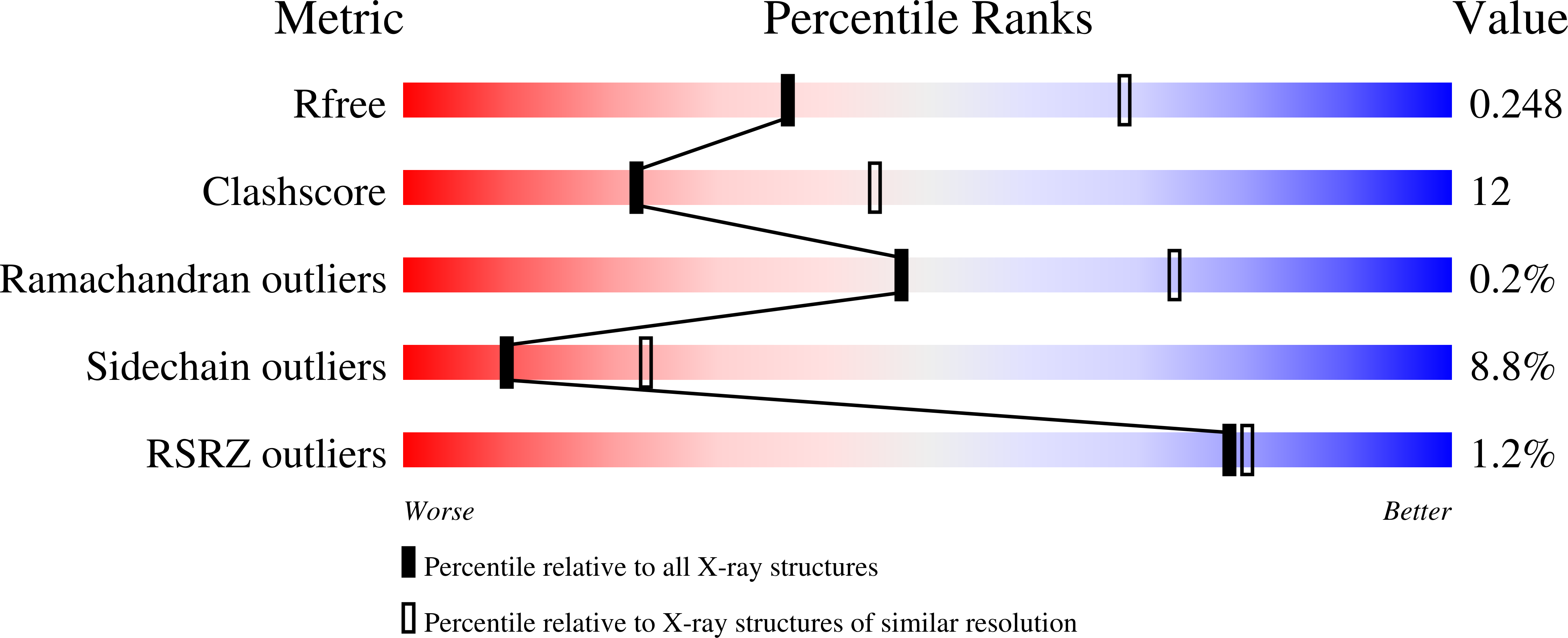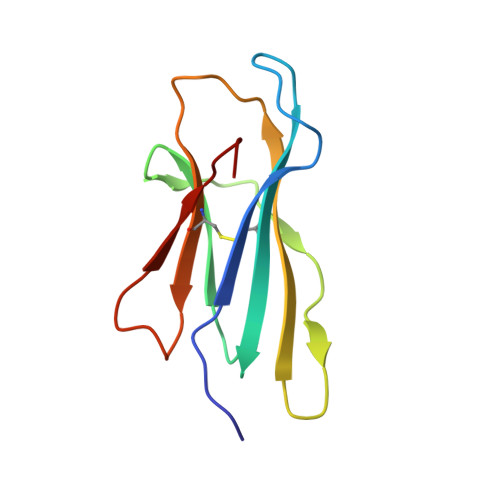Protein-induced photophysical changes to the amyloid indicator dye thioflavin T.
Wolfe, L.S., Calabrese, M.F., Nath, A., Blaho, D.V., Miranker, A.D., Xiong, Y.(2010) Proc Natl Acad Sci U S A 107: 16863-16868
- PubMed: 20826442
- DOI: https://doi.org/10.1073/pnas.1002867107
- Primary Citation of Related Structures:
3MYZ, 3MZT - PubMed Abstract:
The small molecule thioflavin T (ThT) is a defining probe for the identification and mechanistic study of amyloid fiber formation. As such, ThT is fundamental to investigations of serious diseases such as Alzheimer's disease, Parkinson disease, and type II diabetes. For each disease, a different protein undergoes conformational conversion to a β-sheet rich fiber. The fluorescence of ThT exhibits an increase in quantum yield upon binding these fibers. Despite its widespread use, the structural basis for binding specificity and for the changes to the photophysical properties of ThT remain poorly understood. Here, we report the co-crystal structures of ThT with two alternative states of β-2 microglobulin (β2m); one monomeric, the other an amyloid-like oligomer. In the latter, the dye intercalates between β-sheets orthogonal to the β-strands. Importantly, the fluorophore is bound in such a manner that a photophysically relevant torsion is limited to a range of angles generally associated with low, not high, quantum yield. Quantum mechanical assessment of the fluorophore shows the electronic distribution to be strongly stabilized by aromatic interactions with the protein. Monomeric β2m gives little increase in ThT fluorescence despite showing three fluorophores, at two binding sites, in configurations generally associated with high quantum yield. Our efforts fundamentally extend existing understanding about the origins of amyloid-induced photophysical changes. Specifically, the β-sheet interface that characterizes amyloid acts both sterically and electronically to stabilize the fluorophore's ground state electronic distribution. By preventing the fluorophore from adopting its preferred excited state configuration, nonradiative relaxation pathways are minimized and quantum yield is increased.
Organizational Affiliation:
Department of Molecular Biophysics and Biochemistry, Yale University, 260 Whitney Avenue, New Haven, CT 06520-8114, USA.
















